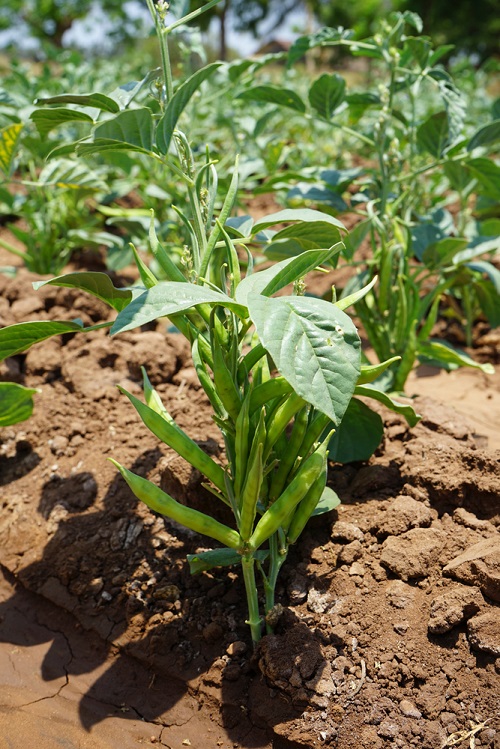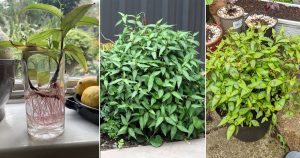Digestive and nutritious, unique in taste. Learn How to Grow Cluster Beans, you can cultivate this legume easily in your garden!
With a plethora of health benefits, cluster beans find their place in the staples of South Asian Countries, majorly India and Pakistan. Learn How to Grow Cluster Beans and include this tasty veggie in your organic vegetable garden!
Cluster Beans Plant Profile
Native to West Africa, Cluster beans or Guars was subdued in India, also considered as its origin. The country produces 80% of the world’s demand.
The cluster beans plant grows between 1-2m in height. It is an upright plant with oval-shaped leaves and fine branching. The plant develops a bunch of blue, pink, and white flowers before forming seedpods. It forms slimy and glossy seedpods of green color in clusters, hence the name.
Young seed pods are used as vegetables in curry recipes; they can also be used in place of French beans and long-yard beans. With a unique exotic flavor, cluster beans can improve soil health, like other legumes.
Botanical Name: Cyamopsis tetragonoloba
Other Names: Guar, Gavar, Guvar, Guar Beans, Guar Fali
USDA Hardiness Zones: 10-11, *can be grown in Zones 8 and 9 in summer as annual
Propagating Cluster Beans
Growing cluster beans plant is somewhat similar to southern peas. You can buy its seeds online or from stores. They have a long taproot, which is why transplanting their seedlings is not a good idea; plant them directly at the desired spot in the garden or containers.
Sow seeds ½ to 1 inch deep in well-draining soil with plenty of compost and farm manure mixed in it. Cover with the medium and expose them to bright indirect sunlight. Seedlings will germinate in 15-20 days, thin out the healthiest of them 6 inches apart. Water well until the plants are established completely.
Ideal Pot Size for Growing Cluster Beans
While you can grow cluster beans directly in the soil, propagating them in pots will help you create an ideal atmosphere, aiding their growth. Get a 10-12 inches deep pot with enough drainage holes at the bottom.
You can easily grow the plant in buckets, clay pots, milk jars, or grow bags.
Requirements for Growing Cluster Beans
Sunlight
Cluster beans need a minimum of 6-8 hours of direct sunlight. An extended period of shade will cease bud formation, hence no fruits. However, do not let the leaves scorch in the mid-day summer sun.
Soil
The plant will grow best in a well-draining, nutrient-rich, sandy, loamy medium with a pH of 7.5-8. The best blend would be 50% good-quality garden soil, 30% sand, and 20% well-rotted manure with a handful of perlite for good drainage.
Water
Cluster beans prefer to stay in a moist condition in their younger days. However, do not let it stand in a soggy medium. Keep an eye on the medium and water it whenever it feels dry to the touch.
Cluster Beans Care
Fertilizer
Make sure to use a manure-rich medium at the time of planting. After a month, side-dress the plant with cow-dung manure or vermicompost to boost growth. You can also use single super phosphate fertilizer if your soil test indicates a lack of phosphorus in the soil.
Pests & Diseases
Leaf-hoppers and pod borers are the main pests that infect cluster beans; powdery mildew and leaf spot are other common diseases. Shower the plant with insecticidal soap or neem oil solution once a week to keep diseases at bay. Also, avoid overwatering.
Weeding
Weeding can be a challenge when growing cluster beans. Remove the weeds from time to time to reduce competition. Also, you may mulch the ground to suppress weed growth.
Harvesting
Within 4-6 weeks after planting, flowers bloom, and seedpods will form. It will be ready to harvest in about 8-12 weeks, depending on the growing conditions.
If you’re growing it to use as a vegetable, harvest it young when seedpods remain slimy and soft in texture and green in color. If you’re growing it for seeds, allow the pods to dry on the plant.












